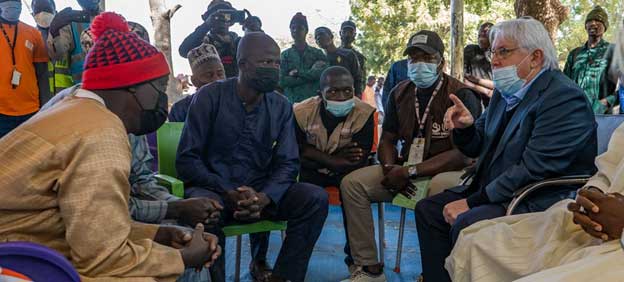[ad_1]
Dien Bien Phu, Vietnam – A distant, mountainous province in northwest Vietnam, Dien Bien Phu is famed for the climactic eponymous battle of 1954 during which the Viet Minh resistance military defeated superior French forces to assist carry an finish to a century of colonial rule.
At the moment, the province is thought for one thing far much less wonderful: grinding poverty. Although Vietnam’s economic system has grown by a median 6.17 % yearly over the previous 20 years, 45 % of Dien Bien Phu’s inhabitants stays mired in poverty, in response to the Common Statistics Workplace of Vietnam, making it the nation’s second-poorest province.
For ethnic minorities, poverty charges are even larger, a symptom of the province’s rugged panorama and cyclical flooding mixed with poor entry to training, transportation, finance and well being care.
Tourism has lengthy been considered as a approach to alleviate poverty in Vietnam. In 2019 alone, the nation welcomed 18 million guests, accounting for 9.2 % of gross home product. However tourism has additionally been blamed for straining infrastructure and precipitating environmental and cultural decay.

Sapa in neighbouring Lao Cai province is a textbook instance. Surrounded by photogenic rice terraces and jagged mountain tops, the city first gained international consideration as a trekking vacation spot within the Nineteen Nineties. Then traders swooped in and constructed more and more massive and extra generic accommodations, turning Sapa right into a perpetual development website ensconced in mud.
“Sapa was so, so stunning the primary time I went there in 1995,” Tuan Nguyen, the director of Hanoi-based bike tour firm Moto Excursions Asia, informed Al Jazeera.
“Now it’s terrible. I don’t take my prospects there any extra. As a substitute, we go to villages in Dien Bien Phu the place conventional tradition and structure of minority hill tribes have been preserved.”
Now, as Vietnam welcomes again foreigners after two years of pandemic-related border closures, Nguyen and his companions are spearheading an initiative to advertise eco-tourism, struggle poverty and protect Indigenous tradition in Dien Bien Phu: a community of village homestays set in conventional stilt homes the place 100% of the income will go to locals who personal and function them.
The initiative was impressed by Phuan Doc Homestay, a property with 40 beds in Che Can, a Hmong ethnic minority village half an hour northeast of Dien Bien Phu Metropolis.

With dreamy rice terraces and misty mountain views, ambling creeks and winding nation roads, a close-by lake teeming with birdlife and each construction within the village adhering to conventional designs, Che Can seems lower straight out of an oil portray.
Including to the color, the locals nonetheless put on conventional Hmong costume: vibrant skirts, blouses and leg wraps constituted of pure fibres like silk and hemp, shirts with batik designs and elaborate headdresses.
“In addition to being tremendous stunning, Che Can is only a actually distinctive expertise [that involves] with the ability to stay with the Hmong and see their lifestyle,” Catherine Ryba, a standard healer from the US who lives in Hanoi, informed Al Jazeera. “It provides you a distinct view of Vietnam and allows you to get out of the vacationer bubble.”
Phuan Doc Homestay, one of many two within the village, was established in 2018 by Lovan Duc with help from the Heart for Neighborhood Growth (CCD), an area subsidiary of the charity Care Worldwide.
“Originally, I didn’t know something about tourism,” Duc informed Al Jazeera. “However CCD educated me about foreigners and took me to see many alternative homestays. That gave me some concepts and with the $13,000 they gave me in loans and grants, I used to be capable of construct a guesthouse of my very own.”
Earlier than the pandemic, Duc and his household hosted about 300 visitors monthly, a 3rd of whom have been foreigners. At the moment they accommodate solely half that, all home vacationers. They cost individuals $5 an evening and one other $12 for meals – feasts of spring rolls, barbecued hen, fish stew, roast duck, rice, dipping sauces, tropical fruits and rice wine that everybody eats collectively.
In addition they lease out bicycles for $3 and supply guided excursions to the close by former underground hideout of Vo Nguyen Giap, aka Crimson Napoleon, the ingenious Vietnamese normal who masterminded the victory over the French at Dien Bien Phu.
“The revenue is a lot better than working in a rice subject,” Duc stated. “We now have the funds for to pay for our youngsters to go to highschool and even go to school in the event that they get adequate grades.”

Nguyen’s plan is to pick out eight to 10 picturesque villages and direct capital from the provincial authorities and NGOs to construct two or three conventional homestays in every.
He additionally plans to supply coaching to locals on work with vacationers and curate nature-based actions like trekking, bicycle driving, kayaking and excursions of historic websites, and usher in volunteers from abroad to tutor locals in English. As soon as the community is established, he envisages that vacationers will keep for 2 or three nights in every village, and spend a median of 10 days in Dien Bien Phu, immersed in village life.
“We don’t see this as a approach to make a revenue,” Nguyen stated. “It’s a five-year plan to empower native communities with jobs and long-term financial alternatives that may assist protect ethnic tradition and structure as an alternative of wiping it out.”
“We would like the native individuals to profit as an alternative of wealthy individuals from Ho Chi Minh Metropolis or Hanoi turning as much as construct huge accommodations like what occurred in Sapa,” he added. “I’ve a good friend there who offered her household’s land 10 years in the past to an investor for $20,000. Now it’s value $1m and he or she actually regrets promoting it. The cash’s all gone now and he or she has nothing to indicate for it.”
What’s to cease a landowner in a scenic space like Che Can, as soon as it makes a mark on the vacationer path, from doing the identical?
Duc stated that whereas he had by no means beforehand thought-about the downsides of tourism, he was assured his village wouldn’t undergo the identical destiny as Sapa.
“Everybody in my village has signed a contract stating that they’re solely allowed to construct conventional picket homes and that they’ll solely be two tales excessive,” he stated. “The neighborhood in our village may be very robust. Folks can not simply determine what to do on their very own.
Duc stated he was additionally not anxious about competitors from his neighbours and supported Nguyen’s efforts to construct on his village’s success.
“I would like them to expertise the success that my household has had to allow them to have higher incomes and higher lives.”
[ad_2]
Source link



/cloudfront-us-east-1.images.arcpublishing.com/gray/GNN7GHUPT5FFXGEE5AAHTK2LRY.jpg)










